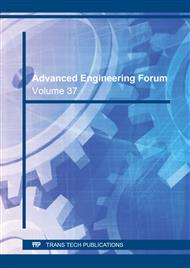p.1
p.15
p.25
p.37
p.47
p.59
Structural Health Monitoring of Steel Frame Structure by Experimental Modal Parameter Identification
Abstract:
Structural health monitoring (SHM) is a modern technique for damage identification in the existing structure. The structural stiffness, frequency, damping, and dominant mode shapes represent the actual operating conditions of the structure. The main principle of structural health monitoring is to identify the modal parameters from experimental results both damaged and undamaged conditions. Damage is much effective to decrease stiffness and strength of structural components and it changes dynamic behaviour and damping ratio of whole structures. Bruel & Kjaer experimental modal analysis technique is recently used for civil engineering structures for modal parameters estimation. The paper describes the initial structural health monitoring of a steel frame. The modal parameters were estimated for undamaged conditions and these results are verified and updated by the numerical FEM tool SAP2000. For the undamaged structure, mode shapes and frequencies were calibrated properly. In the second step, damaged was initiated by dismantling one element from the lower part of the frame. The estimated modal parameters were compared to the initial one. The mode shapes and frequencies are quite different for some specific mode due to damage initiation. One extra mode was created for the damaged frame due to damage initiation. The 4th mode was not found for the initial measurement because of presence of lower beam. Lower beam restraints the 4th mode and the frame behaves more flexible. Keywords: SHM, Modal parameters, FEM modelling, Damage characterization, Experimental modal analysis (EMA).
Info:
Periodical:
Pages:
1-13
Citation:
Online since:
September 2020
Authors:
Price:
Сopyright:
© 2020 Trans Tech Publications Ltd. All Rights Reserved
Share:
Citation:


